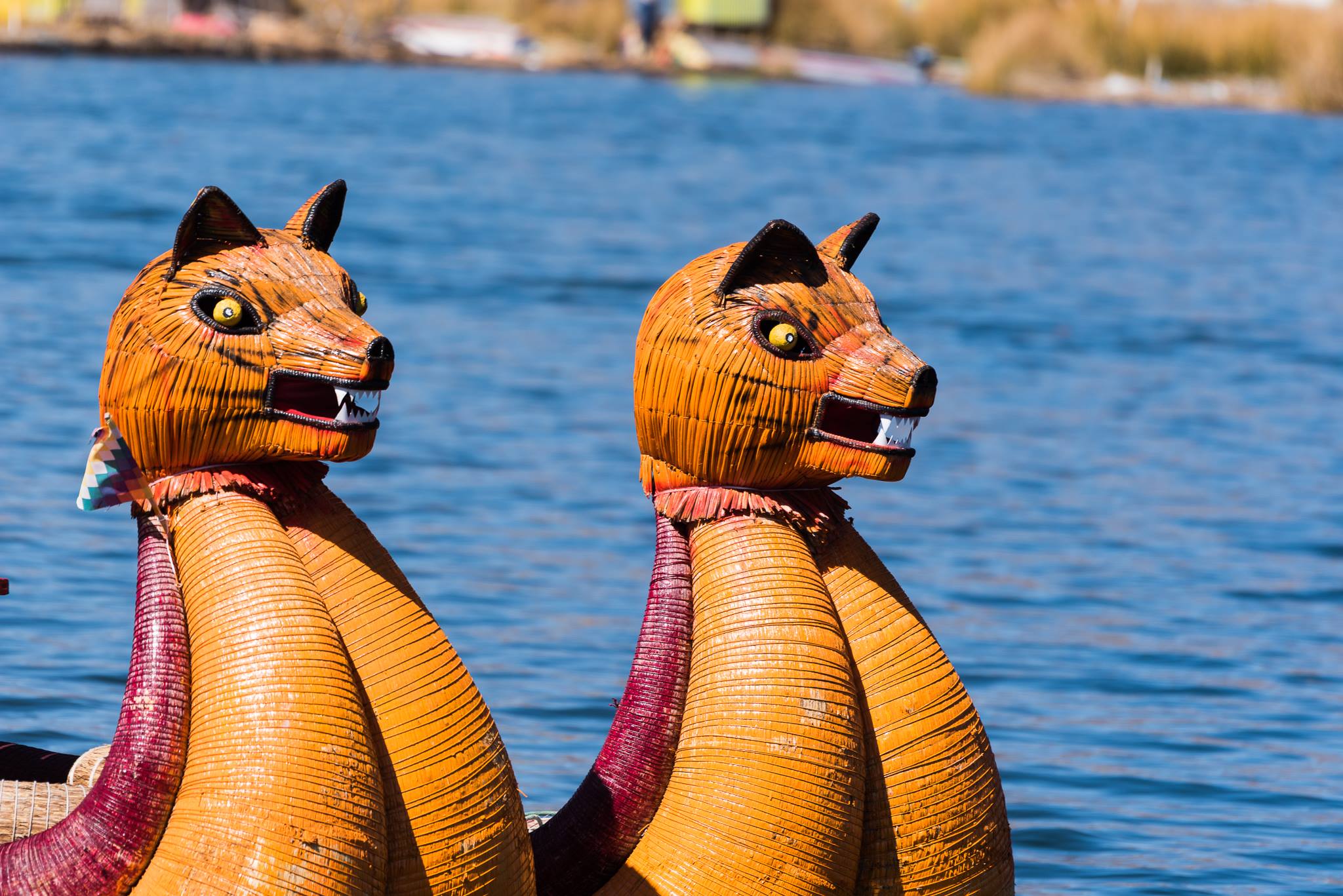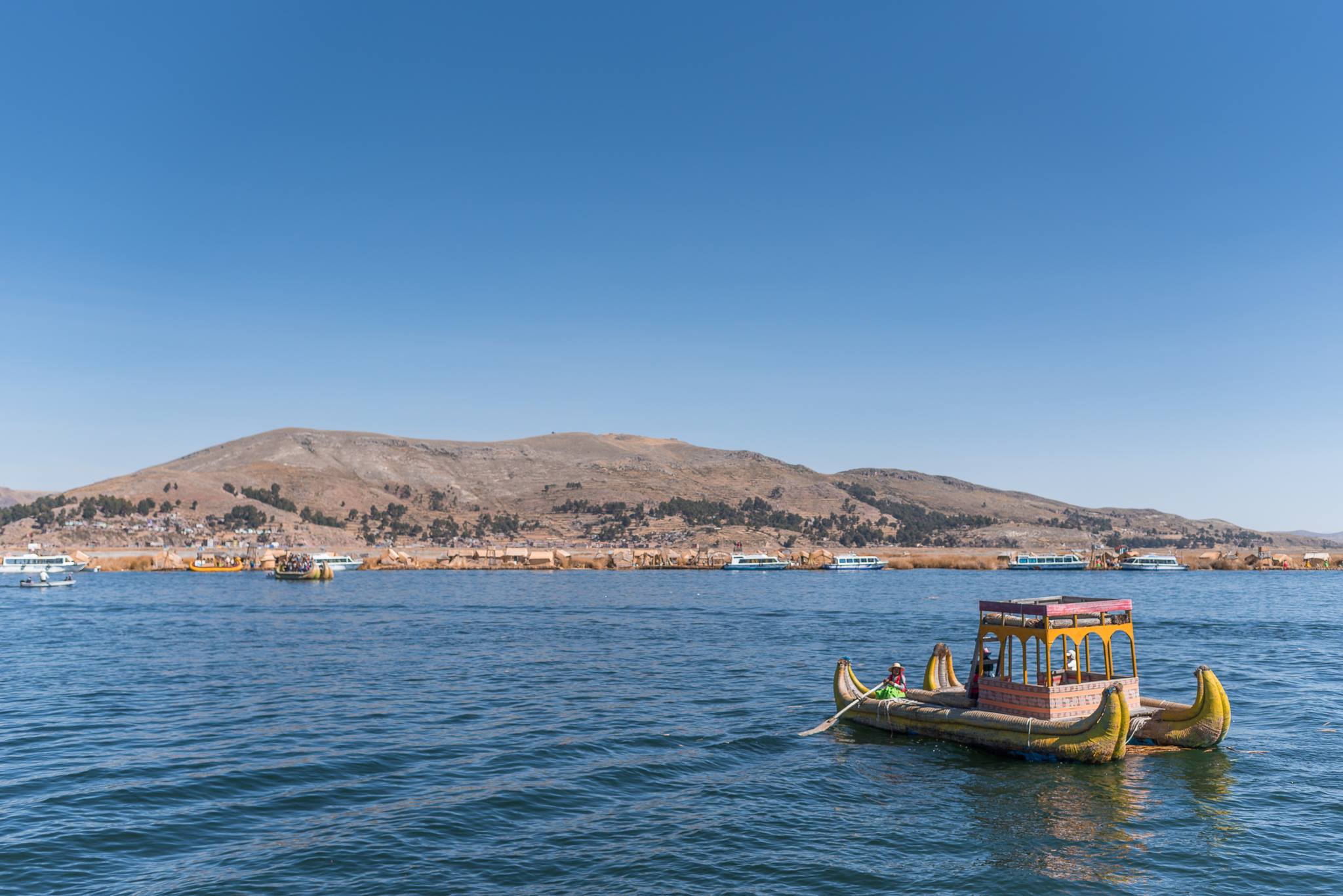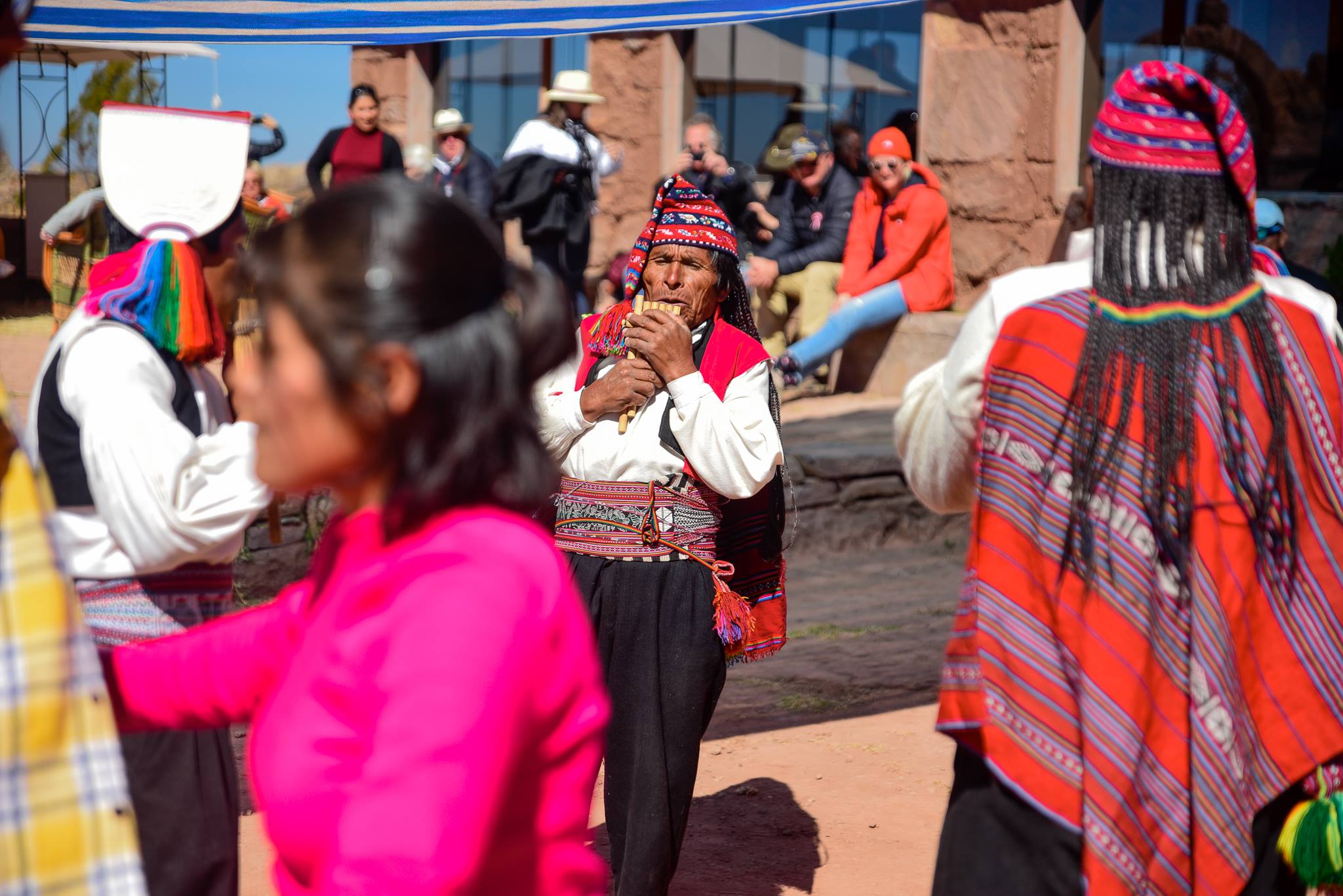Peru’s ephemeral floating islands, golden-hued and gracefully delicate, appear like a mirage in Lake Titicaca. But their origins, paradoxically, reflect the strength and tenacity of the native peoples who created them.
The ancient Uros people, a much older indigenous group than the Incas who built Machu Picchu, migrated to Peru’s Lake Titicaca 3,700 years ago. The astute Uros outsmarted the Incas that pushed into their territory many centuries later by hiding in the totora reeds that grow profusely along the shore of Lake Titicaca. The highest navigable lake in the world, it straddles Peru and Bolivia at 12,500 feet above sea level.
But the Uros couldn’t remain hidden in the reeds forever. They eventually layered bundles of the dried buoyant reeds to create floating islands nine miles from the shore. The Uros anchored the islands with rope to eucalyptus posts secured in the lakebed, making them movable, if necessary, to escape the wrath of hostile invaders. Not only did they outwit the Incas and survive, but the Uros never died out. Their descendants still live in reed houses on several dozen floating islands today. In fact, the totora reed — a cattail-type rush whose thick roots support the top layer — became the foundation of their whole culture, providing home, transportation, and financial sustenance for the people.
READ: We Take the Slow (But Luxurious) Train to Titicaca
For an otherworldly experience of the Uros culture, surrounded by steep Andean peaks and the blue glacial-fed waters of South America’s only large freshwater lake, you must make your way to Puno, Peru’s major port town on Lake Titicaca. Whether you book a tour package that includes a 30-minute guided boat ride and lunch on an island, an overnight or weekend homestay, or you choose to go on your own, you’ll find a visit to the islands a unique experience. Step off the boat and don’t be surprised when your feet sink between 2 and 4 inches and you feel the springiness of those layered reeds instead of firm ground under your feet.

Women in bright-colored full skirts will step forward to greet you and show you their way of life, such as air-drying fish, ground-baked Andean bread, and preparing a traditional soup of potato, onion, garlic, and fish in big black pots. Clay ovens must be set on a base of stones to ensure that reeds don’t catch on fire and burn down the island. And someone will invite you into one of the communal homes for a visit and a chance to try on a traditional costume for photos.
An interpreter will tag along to translate everything because most Uros people speak only Aymara — an endangered native language — while a few know Spanish. The island chief will also appear and he or another man will explain how they cut the reeds with a spear-like knife on the end of a pole and add a new top layer of bundled reeds to the islands every two weeks as the bottom layer breaks apart and deteriorates. It takes them 18 months to build a new island, which must be done every 30 years, and three months to weave a balsa, their crescent-shaped boats used for transportation and fishing. Their homes must be reinforced regularly. More recently, the Uros incorporated recycled plastic bottles into the bundled reeds for increased buoyancy and lifespan, and to reduce plastic pollution. Each island typically contains several thatched-roof houses, which tend to belong to members of a single extended family.
READ: Four Seasons Chicago Reopens After Renovation
While their lifestyle roughly mirrors that of their ancient ancestors, the Uros enjoy some basic modern advancements and comforts. Homes stay a bit dryer with corrugated metal roofs. Islands are solar-powered, and some people have mobile phones and TVs. Shower buildings have water-heating cells and hot-water boilers that provide warm showers. There are small outhouse islands with toilets where the ground roots help absorb the waste, and other islands that house schools, so children now have an opportunity for education that their parents and grandparents didn’t. A nearby natural island, Taquile, has an Uros-run FM radio station that plays music several hours a day.

The women weave textiles for clothing, and they spin and dye yarn but do not knit. Knitting is considered men’s work, and a man better be skilled if he hopes to marry because a blessing for his intended’s hand in marriage depends on it. You won’t get off an island without a sales presentation of their handmade knitted hats, decorative textiles, and totora-woven toys and baskets, so important to their economy.
Very self-sufficient, the Uros depend on barter to acquire most of what they need, trading birds and eggs for supplies on the mainland. They do earn money from fishing, but 80 percent of the Uros economy is based on tourism. Since they receive very little money from tour groups and boat tickets, they supplement their income by selling their reed handicrafts to tourists. If you don’t see something you want to buy, you can always leave a donation for their warm hospitality.
For more Destination inspiration click here.
Want to Stay Up to Date? Follow us on Facebook or Instagram or Sign Up for our Bi-Weekly Newsletter.

